Transfer News
April - June 2021
UFZ scientists establish RWInnoTEC GmbH
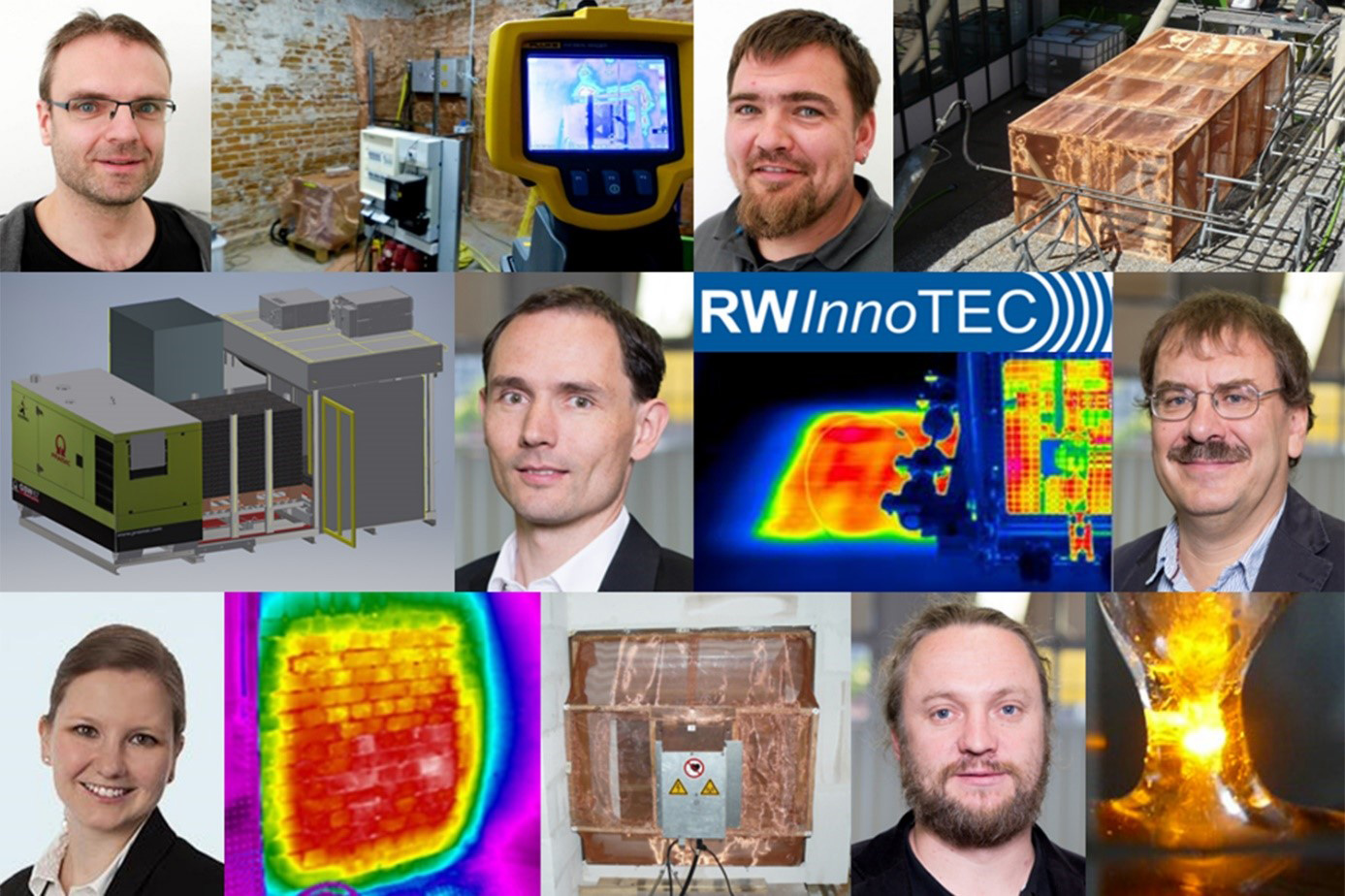 RWInnoTEC founding team: top: Frank Holzer and Christian Hoyer; middle: Markus Kraus and Ulf Roland; bottom: Maria Kraus and Ulf Trommler. Photos: Susan Walter-Pantzer / graphics: UFZ
RWInnoTEC founding team: top: Frank Holzer and Christian Hoyer; middle: Markus Kraus and Ulf Roland; bottom: Maria Kraus and Ulf Trommler. Photos: Susan Walter-Pantzer / graphics: UFZ
The development of radio wave technology at the UFZ already started in the 1990s. At that time, UFZ researchers investigated the use of radio waves for thermal support of soil remediation by extracting pollutants from the soil at higher temperatures or supporting biological degradation processes. After this procedure was successfully transferred into practice, the scientists looked for other possible applications of this innovative heating method - for example, to make various technological processes in industry cheaper and more effective - with success!
A six-member interdisciplinary team of physicists, chemists, engineers and business economists from the Helmholtz Centre for Environmental Research (UFZ) and the Leipzig University of Applied Sciences (HTWK) have now founded a company to develop and apply radio waves. The initial focus of the new company is to establish radio wave-based processes in the construction industry. This concerns, for example, the rehabilitation of road damage with asphalt heated on site - a method that can be used regardless of the season compared to currently common methods. A corresponding prototype will be ready for use this year. The company founders see further fields of application in masonry drying and chemical-free wood preservation.
The Federal Ministry for Economic Affairs and Energy supported the founding of RWInnoTEC for two years as part of the EXIST research transfer programme. The foundation of the company is part of the cooperation between the UFZ and the HTWK, which has been ongoing for many years and has laid the foundations for numerous joint research and development projects.
Find more information here.
June 2021
Flood (self-)prevention in Saxony: Natural Resources Cluster Team visits BDZ e.V. and HTW Dresden
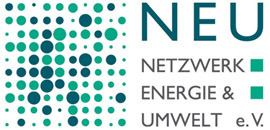 The Natural Resources Cluster Team as part of the Netzwerk Energie und Umwelt e.V. (trade and cluster management association) held its first business meeting for this year on 04 May 2021. In cooperation with Dr. Gabriele Stich from the Education and Demonstration Centre for Decentralised Infrastructure (BDZ e.V.) in Leipzig, Antje Lange (also BDZ e.V.) and Dr. Sebastian Golz from the Dresden University of Applied Sciences (HTW) provided information on current developments and instruments in flood prevention in Saxony in two keynote speeches that were accompanied by numerous questions and intensive discussions.
The Natural Resources Cluster Team as part of the Netzwerk Energie und Umwelt e.V. (trade and cluster management association) held its first business meeting for this year on 04 May 2021. In cooperation with Dr. Gabriele Stich from the Education and Demonstration Centre for Decentralised Infrastructure (BDZ e.V.) in Leipzig, Antje Lange (also BDZ e.V.) and Dr. Sebastian Golz from the Dresden University of Applied Sciences (HTW) provided information on current developments and instruments in flood prevention in Saxony in two keynote speeches that were accompanied by numerous questions and intensive discussions.
The next business talk in the Natural Resources Cluster Team is planned for October 2021.
As a working group of the city of Leipzig’s Netzwerk Energie und Umwelt - NEU e.V., the Natural Resources Cluster Team focusses on companies in the field of environmental technologies which are or wish to become active in Leipzig and the region. The cluster team is led jointly by Sachsen Wasser GmbH and UFZ and aims to bring together these companies and to promote exchange with academia and local authorities.
In case of any questions or interest in future cluster team events, please contact Dr. Joachim Nöller (
joachim.noeller@ufz.de
), Knowledge and Technology Transfer (WTT), UFZ
June 2021
Start-up initiative receives EXIST start-up grant
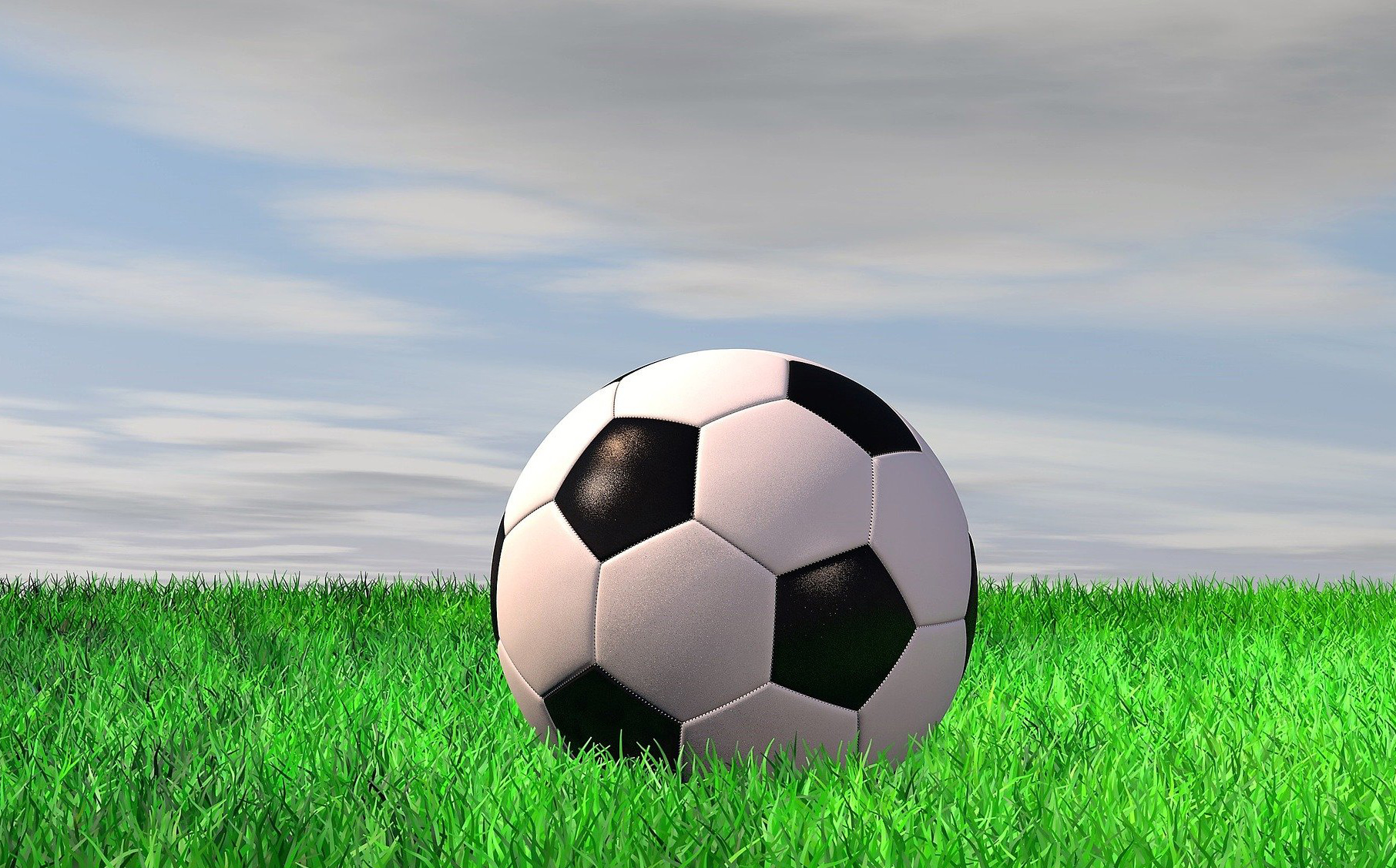 Worldwide, millions of euros are spent annually to maintain natural grass pitches. However, the maintenance of grass pitches in sports clubs is still primarily analogue. Greenkeepers and sports clubs are confronted with stricter ecological requirements, climatic changes and an increase in the number of games played. Poor pitch conditions also increase the risk of sports injuries and clubs risk economic losses due to downtime and rehabilitation measures for their players. Although match optimisation data is an integral factor in sports operations, there is a lack of technology to collect high quality data on turf.
Worldwide, millions of euros are spent annually to maintain natural grass pitches. However, the maintenance of grass pitches in sports clubs is still primarily analogue. Greenkeepers and sports clubs are confronted with stricter ecological requirements, climatic changes and an increase in the number of games played. Poor pitch conditions also increase the risk of sports injuries and clubs risk economic losses due to downtime and rehabilitation measures for their players. Although match optimisation data is an integral factor in sports operations, there is a lack of technology to collect high quality data on turf.
The Smart Green Monitoring team is working on a solution that will revolutionise traditional greenkeeping.
The planned company aims to use sensors that record the condition of turf in sports areas to enable cost-effective ecological maintenance of the turf and thus optimal game operation. A combination of innovative sensor technology is used to collect data on pitch conditions. This data will then be analysed to make recommendations for action via a software.
The international founding team has expertise in precision agriculture, sports media, machine learning, motion, and plant research and is accompanied by Prof. Dr. Peter Dietrich, head of the UFZ Department of Monitoring and Exploration Technologies, as their scientific mentor.
The project is funded by the Federal Ministry for Economic Affairs and Energy and the European Social Fund within the framework of the EXIST programme (EXIST-Gründerstipendium – start-up grant).
The EXIST start-up grant supports scientists from universities and non-university research institutions who are interested in setting up their own business. The most important prerequisite is that the planned business idea must be an innovative technology-oriented or knowledge-based product with significant unique selling points and good prospects of economic success.
Contact:
Milina Rochelle Alber milina.alber@ufz.de , Department Knowledge and Technology Transfer (WTT) at the UFZJune 2021
Towards the development of sustainable bioprocesses – The impact of biofilms-based bioreactor technology for continuous production of chemicals
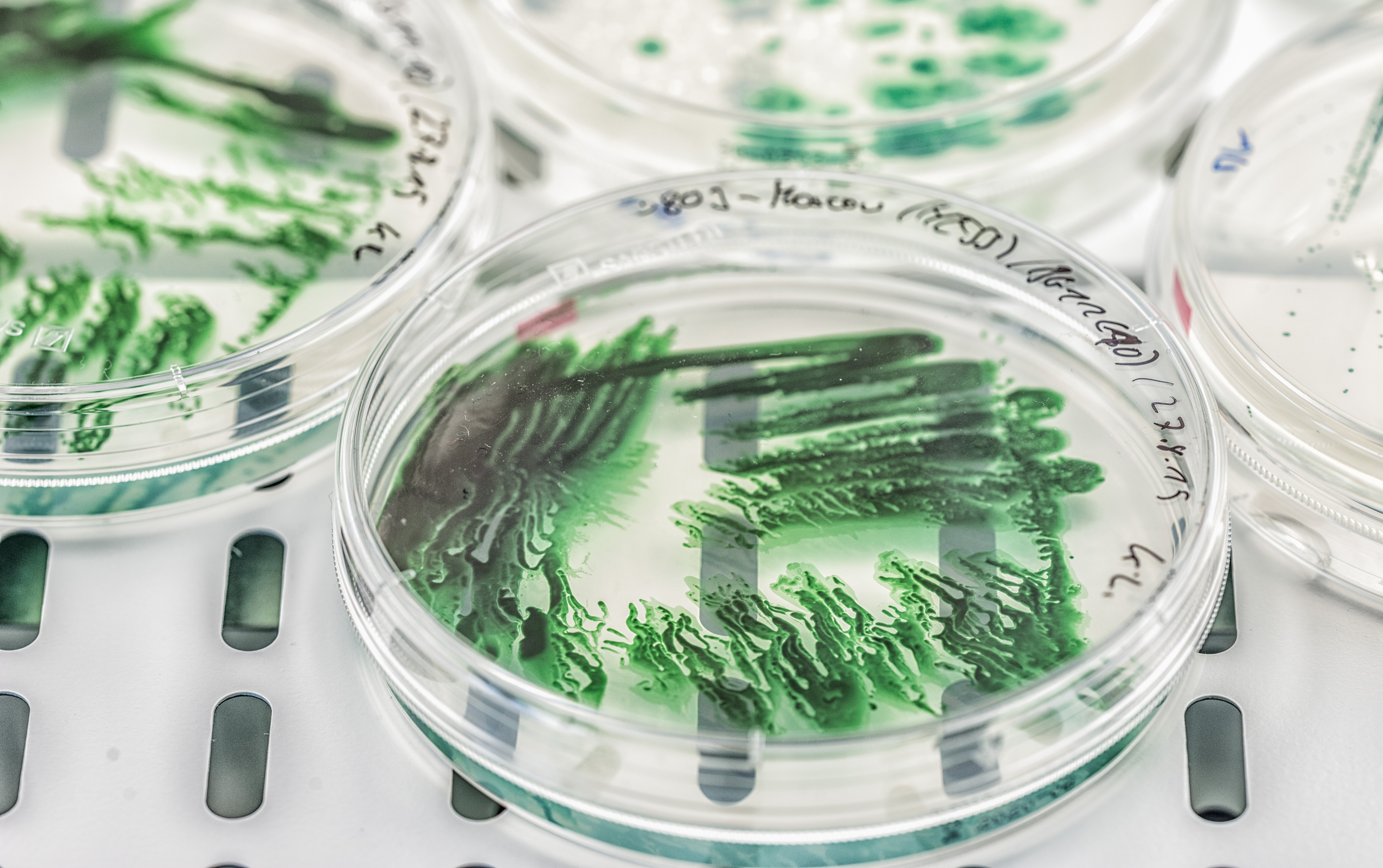 Biofilms are naturally immobilized cells embedded within self-produced polymeric substances. Typically, biofilms are considered to be trouble makers because of their role in bio-corrosion, bio-fouling, and bio-clogging, and difficulties in eradicating. However, their stability and robustness towards environmental, chemical, and mechanical stresses can be exploited for catalysis and developing continuous processes. In this context, the working group “Catalytic Biofilms” headed by Prof. Dr. Katja Bühler from the Department of Solar Materials at UFZ, studies the potential of bacterial biofilms as biocatalysts for the production of hydrogen, chemicals, and energy carriers.
Biofilms are naturally immobilized cells embedded within self-produced polymeric substances. Typically, biofilms are considered to be trouble makers because of their role in bio-corrosion, bio-fouling, and bio-clogging, and difficulties in eradicating. However, their stability and robustness towards environmental, chemical, and mechanical stresses can be exploited for catalysis and developing continuous processes. In this context, the working group “Catalytic Biofilms” headed by Prof. Dr. Katja Bühler from the Department of Solar Materials at UFZ, studies the potential of bacterial biofilms as biocatalysts for the production of hydrogen, chemicals, and energy carriers.
Previously the group succeeded in engineering microorganisms to produce cycloalkane-derived monomers using suspended and immobilized biofilms (1a). Furthermore, the group showed that the co-cultivation of mixed-species biofilms, i.e., biofilms consisting of a photoautotrophic strain and chemoheterotrophic strain, yielded a so far unattained long-term stability over several weeks and much higher cell densities (1b).
To further improve bioprocess efficiency and enable long-term outdoor applications, in two recent studies, the catalytic performance of biofilms using different reactor designs and materials were evaluated:
- Conventional capillary reactors, made of polystyrene, are cheap and easy to handle but have the drawback that the material becomes yellow and embrittles under UV irradiation. Here capillary reactors made of borosilicate glass and quartz glass were tested (2). For this purpose, the authors cultivated mixed-species biofilms consisting of photoautotrophic Synechocystis sp. PCC 6803 and chemoheterotrophic Pseudomonas taiwanensis VLB120 that are able to convert cyclohexane to cyclohexanol. Both growth and catalytic performance of these biofilms were investigated in glass capillaries, and production rates up to 6.4 g m-2 d-1 for cyclohexane oxidation were reported. Although stable product formation was still disturbed by the detachment of the biofilms, the authors proposed ways to overcome this challenge for future applications.
- Together with partners of The Novo Nordisk Foundation Center for Biosustainability, Denmark, and SpinChem AB, Sweden, the biocatalytic performance of a Baeyer-Villiger monooxygenase catalyzing the reaction of cyclohexanone to ε-caprolactone in Pseudomonas taiwanensis VLB120 biofilms were investigated (3). Catalytic activity was explored for two different reactor designs - Drip Flow Reactors (DFRs) and Rotating Bed Biofilm Reactors (RBBRs). Heuschkel and co-workers found high production rates of approx. up to 90 g m–2 d–1 in DFRs. However, biofilm structure and distribution were still inhomogeneous, mainly due to the low-shear environment. Furthermore, the applications of these reactors on a technical scale are limited due to scalability issues. To overcome these challenges, biocatalytic performance in RBBRs was investigated. By controlling the cyclohexanone feed, a stable product formation rate of 14 g m–2 d–1 and a substrate conversion of 60% were achieved in the RBBR.
THUS, the UFZ working group is one step closer to the continuous production of monomers derived from cycloalkanes and setting a road map for a later industrial application of biofilms.
Further information:
(1): Patent applications: a) EP3510164A1, b) WO002020052762A1
(2): Heuschkel, I., Dagini, R., Karande, R., Bühler, K. (2020): The impact of glass material on growth and biocatalytic performance of mixed-species biofilms in capillary reactors for continuous cyclohexanol production, Front. Bioeng. Biotechnol. 8, art. 588729
(3): Heuschkel, I., Hanisch, S., Volke, D.C., Löfgren, E., Hoschek, A., Nikel, P.I., Karande, R., Bühler, K.: Pseudomonas taiwanensis biofilms for continuous conversion of cyclohexanone in drip flow and rotating bed reactors, Eng. Life Sci. 2021;1–12.
Contact:
Dr. Rohan Karande rohan.karande@ufz.de & Prof. Katja Bühler katja.buehler@ufz.de , Department Solar MaterialsMay 2021
Establish entrepreneurial thinking and behaviour as an integral part of our institutional culture
The aim of the “Gründercampus HoMe” is to keep track of trends, perspectives, ideas and innovative potential and to create regional and technology based start-ups. Teams at both locations support and guide employees and students through the entire start-up process and beyond. This joint support includes start-up advice, learning and qualification offers as well as assistance in areas of financing and funding and in the creation of business plans. In addition, founders from both institutions get access to local, regional and national networks. The concept intentionally focuses on the integration of external entrepreneurial expertise.
“With the 'Gründercampus HoMe', the Merseburg University of Applied Sciences has reached a qualitatively new level in the field of entrepreneurship and start-up support,” emphasises Project Manager, Dr. Annette Henn, while underlining the strategic importance of the project for the Merseburg University of Applied Sciences.
“By being part of the project, the UFZ is significantly expanding its advisory services and brings, in addition to its extensive knowledge and diverse tools for the development of transfer pipelines for transfer and application of innovative technologies and product ideas, many years of experience in professionally managing intellectual property rights including out-licensing to companies, into the project," explains Dr. Joachim Nöller, Head of the Knowledge and Technology Transfer Department and person in charge of the project at the UFZ.
A virtual project kick-off event will take place on April 28th, 2021. In addition to company speed talks, the event will also include a flashlight round with future founders. You can register here.
Contact at the UFZ: Milina Alber
milina.alber@ufz.de
, Knowledge and Technology Transfer
April 2021
Biomarkers for the detection and quantification of types of cancer discovered
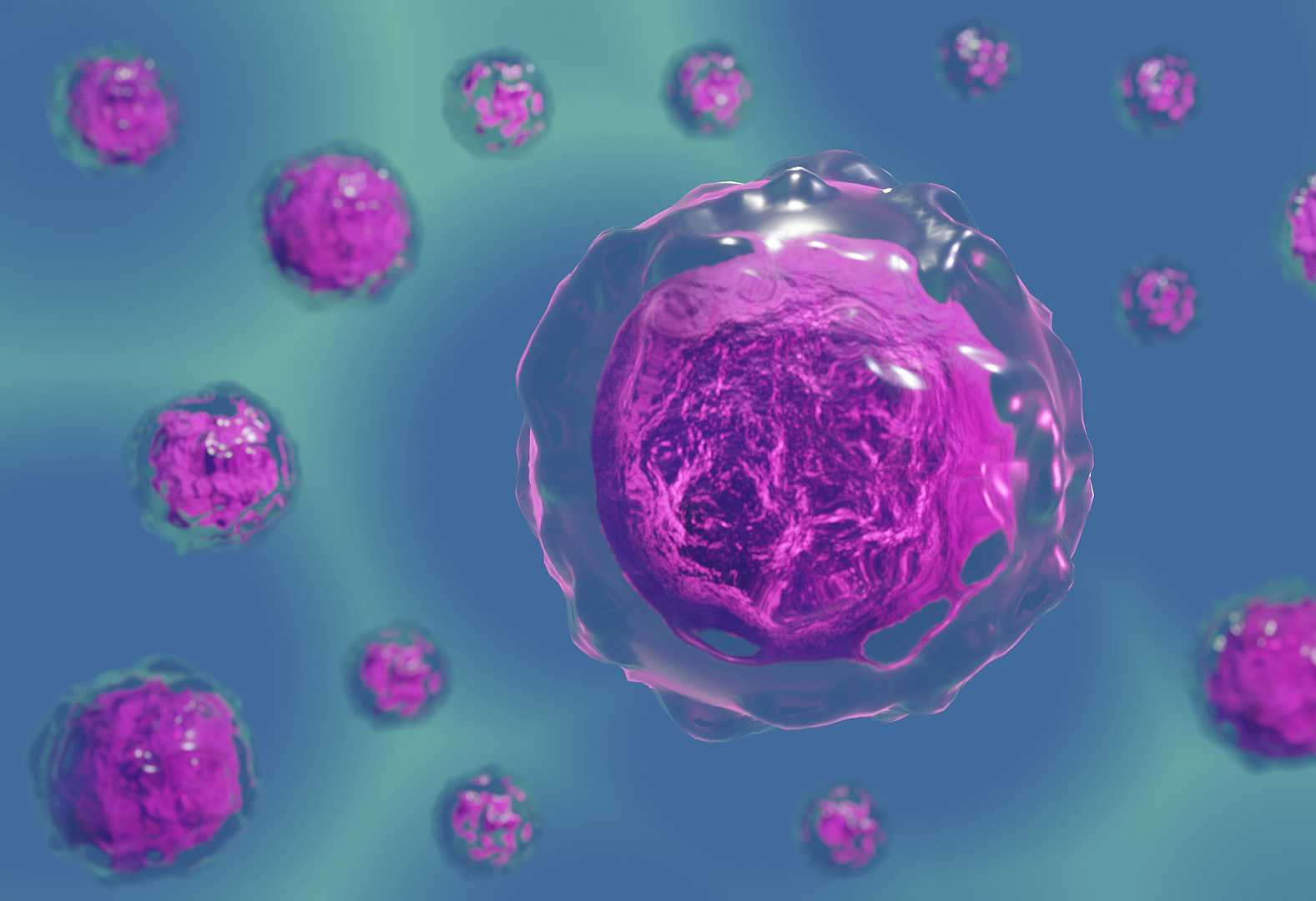 Within the scope of the BMBF-funded joint project "GlioPATH" (FKZ: 01ZX1402D) of the German Cancer Research Center (DKFZ), the Friedrich Schiller University Jena and the UFZ, two new biomarkers for the detection and quantification of different types of cancer and for monitoring specific therapeutic approaches were discovered.
Within the scope of the BMBF-funded joint project "GlioPATH" (FKZ: 01ZX1402D) of the German Cancer Research Center (DKFZ), the Friedrich Schiller University Jena and the UFZ, two new biomarkers for the detection and quantification of different types of cancer and for monitoring specific therapeutic approaches were discovered.
These new biomarkers are in form of aryl-hydrocarbon receptors (AHR).
The activation of aryl hydrocarbon receptors (AHR) play an important role in many biological processes, e.g. in cancer development, tumour invasion, chronic inflammatory and autoimmune diseases. Patents (joint inventions) for the AHR transcriptional gene signatures have been applied for and allow for the first time the detection and evaluation of the AHR activation status in different tissues.
In addition, a third enzyme, interleukin 4 (induced 1), was also discovered in the project. Its metabolites also activate AH receptors and can thus also be used as a new biomarker for the detection and quantification of various types of cancer.
These transcriptional biomarkers also allow for the first time to group patients and monitor specific therapeutic approaches.
Under the leadership of the DKFZ, the partners involved have now agreed to internationally exploit the two inventions.
April 2021
Electro-bioremediation of groundwater
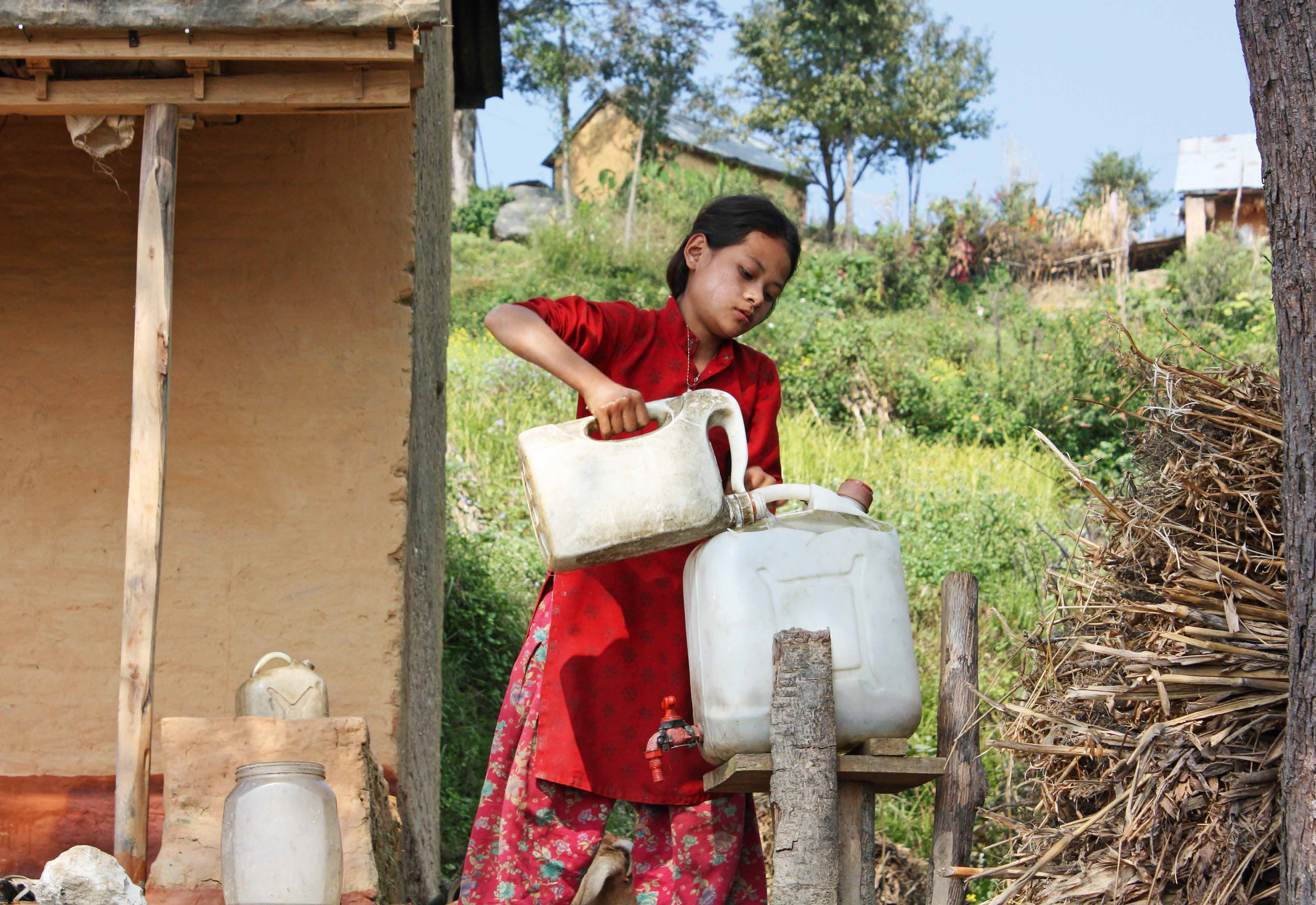 Drinking water supply in rural Bangladesh, © UFZ
Drinking water supply in rural Bangladesh, © UFZ
Arsenic and nitrate occur as contaminants in groundwaters that have a high bicarbonate content with a natural dissolution of arsenic-containing minerals in connection with dry periods or selective industrial discharges/leakages (e.g. plants for the production of insecticides, pesticides or wood preservatives). Due to the high health risks, the World Health Organisation (WHO) has set a guideline value for contaminated drinking water. However, about 137 million people in the world, 90 million of them in Bangladesh and China alone, consume arsenic-contaminated water that exceeds this WHO threshold.
Together with colleagues from the University of Girona, UFZ scientists Benjamin Korth and Falk Harnisch from the Department of Environmental Microbiology have now developed a new bioelectrochemical process for treating groundwater contaminated with nitrates and arsenic - an important step towards being able to help the affected countries.
Microbial electrochemical technology (MET) is based on systems that harness the ability of electroactive microorganisms to carry out oxidation and reduction reactions on solid electron conductors (e.g. electrodes). In doing so, these electroactive microorganisms are able to use the anode and the cathode as an inexhaustible electron acceptor and donor, respectively.
Find more information about the process in the publication.
Contact: Dr. Benjamin Korth, benjamin.korth@ufz.de & Prof. Dr. Falk Harnisch, falk.harnisch@ufz.de ; Department of Environmental Microbiology, UFZ
April 2021
BiodivERsA Prize awareded to TALE project
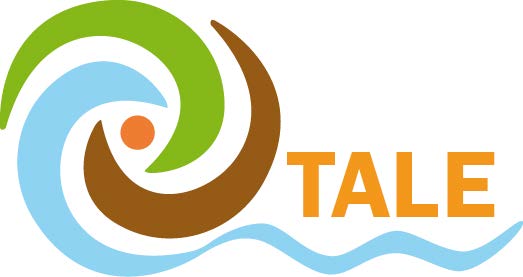 In the TALE project (Towards multifunctional agricultural landscapes in Europe), which was coordinated by the UFZ, researchers from institutes across Europe investigated potential conflicts and possible synergies between providing agricultural services and conserving biodiversity in five case study regions. The team led by Martin Volk, UFZ Department of Landscape Ecology, has now been awarded the BiodivERsA prize for the results of this work.
In the TALE project (Towards multifunctional agricultural landscapes in Europe), which was coordinated by the UFZ, researchers from institutes across Europe investigated potential conflicts and possible synergies between providing agricultural services and conserving biodiversity in five case study regions. The team led by Martin Volk, UFZ Department of Landscape Ecology, has now been awarded the BiodivERsA prize for the results of this work.
In the TALE project, strategies for balancing conflicts and assessing and managing synergies were created by developing land use scenarios and optimisation models. The objectives, results and recommendations are presented in the policy brief "Preserving Ecosystem Services and Biodiversity on agricultural land".
Additionally, the research teams developed methodological material that can be used to implement the TALE approach in your own case study. The methods and tools can be accessed for free on the TALE learning platform.
The BiodivERsA Prize for Excellence and Impact has been awarded annually since 2018. This video award recognises achievements of BiodivERsA-funded projects that have produced excellent science with concrete impact for policy and society.
April 2021
